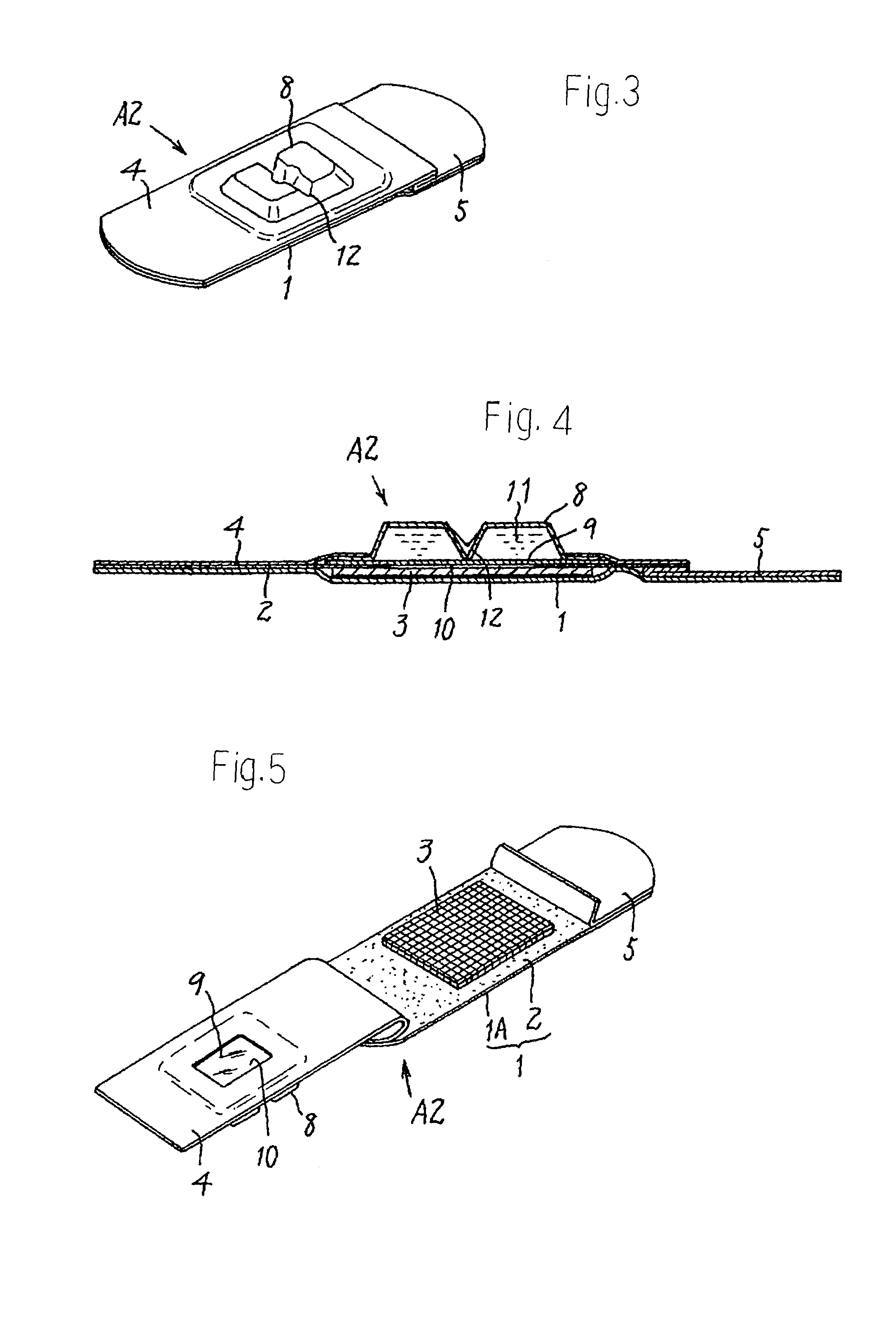First aid adhesive plaster
a technology of adhesive plaster and adhesive layer, which is applied in the field of first aid adhesive plaster, can solve the problems of high manufacturing cost, insufficient air permeability of the whole adhesive layer, and change in skin color, so as to suppress the effect of deterioration of medicine efficiency and low pri
- Summary
- Abstract
- Description
- Claims
- Application Information
AI Technical Summary
Benefits of technology
Problems solved by technology
Method used
Image
Examples
Embodiment Construction
[0056]Now, a specific embodiment of the invention is described based on the drawings. A first aid adhesive plaster A1 as shown in FIGS. 1 and 2 has the structure that a pad member 3 is stuck onto the longitudinal center of an adhesive agent layer 2 of an adhesive support sheet 1 having a rectangular shape in plan view, and the pad member 3 is covered with and is held by two release papers 4, 5 releasably stuck onto the longitudinal both ends of the adhesive agent layer 2, respectively of the support sheet 1. The first aid adhesive plaster A1 is used in a manner that the release papers 4, 5 are removed from the adhesive sheet 1, and the adhesive agent layer 2 of the adhesive sheet 1 is stuck to a skin in a state that the pad member 3 is in contact with an affected part like a wound or an insect bite.
[0057]In the first aid adhesive plaster A2 as shown in FIGS. 3 to 5, the pad member 3 is stuck onto the longitudinal center of the adhesive agent layer 2 of the adhesive sheet 1 having a ...
PUM
| Property | Measurement | Unit |
|---|---|---|
| wavelength | aaaaa | aaaaa |
| thickness | aaaaa | aaaaa |
| thickness | aaaaa | aaaaa |
Abstract
Description
Claims
Application Information
 Login to View More
Login to View More - R&D
- Intellectual Property
- Life Sciences
- Materials
- Tech Scout
- Unparalleled Data Quality
- Higher Quality Content
- 60% Fewer Hallucinations
Browse by: Latest US Patents, China's latest patents, Technical Efficacy Thesaurus, Application Domain, Technology Topic, Popular Technical Reports.
© 2025 PatSnap. All rights reserved.Legal|Privacy policy|Modern Slavery Act Transparency Statement|Sitemap|About US| Contact US: help@patsnap.com



